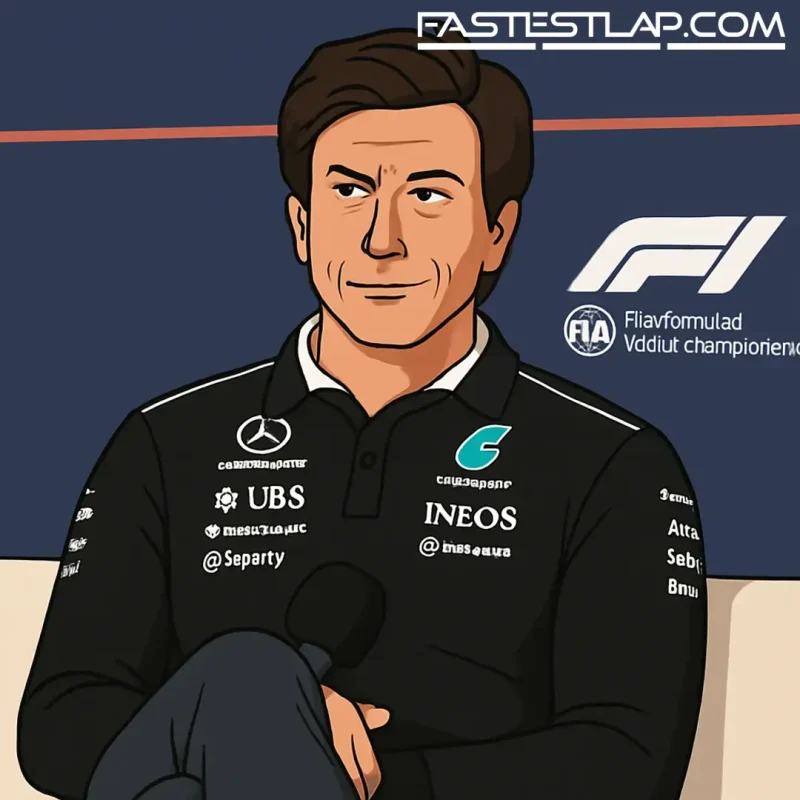Toto Wolff: Engine makers “aligned” on F1’s next-next power plan — but no appetite for double spend
Toto Wolff says the people who actually have to build F1’s engines are broadly on the same page about where the sport should go after the incoming power unit era — and it’s not towards an expensive reset mid-cycle.
Speaking at Monza, the Mercedes team boss described “an alignment of interest” among manufacturers on the framework for Formula 1’s post-2026 direction. A London sit‑down slated for this week was pushed back, with FIA single-seater director Nikolas Tombazis admitting there “wasn’t going to be enough consensus” yet to make it worthwhile. The message from the room, however, is clear: keep costs under control and don’t ask OEMs to bankroll two projects at once.
For now, the sport is committed to the next-generation 1.6‑litre V6 hybrid, with a much heavier electric contribution — roughly a 50/50 split with the internal combustion engine — and fully sustainable fuel. That package lands next season and, as Wolff put it, should be allowed to breathe.
“Most of the OEMs said we don’t want to run a dual cost program earlier, because it would effectively mean we need to develop the new engine in two years,” Wolff said. “We didn’t want that.”
In other words: talk of bringing in a fresh spec as early as 2029 has cooled. The expectation is these units will see out a full regulatory cycle, potentially through 2031. No one wants to spend big to launch a clean-sheet design, then toss it aside after two seasons.
What’s interesting is the shape of the conversation beyond that. Wolff revealed there’s been growing alignment around a concept that would scratch the itch many fans still have for visceral power units, without binning the technology F1 has invested in: a naturally aspirated V8 matched to an energy recovery system, running on sustainable fuel. Not a return to 2013, then — more like a modern, hybridised V8 with a proper eco credential.
“I think where we are all on sharing the objective is to have the best possible, spectacular regulations to attract fan interest,” he said. “And the V8, at the end, was the best consensus, and have it naturally aspirated, revving, with an energy recovery system that is still a performance differentiator, and all of that is pretty aligned with a sustainable fuel.”
That doesn’t mean it’s done. Tombazis has been upfront that cost reduction sits at the centre of the FIA’s brief, and he’s not passing judgement on any set of rules before they’re final. The political choreography now moves to the top table: Wolff name-checked FIA President Mohammed Ben Sulayem and FOM CEO Stefano Domenicali as key voices in the next phase of talks.
“It’s about the dialogue with Mohammed Ben Sulayem and with Stefano, what are their expectations?” Wolff said. “And then getting all the OEMs and all the engine manufacturers on the table and say, ‘what are we doing now?’ But there’s an alignment of interest, I would say. It’s really good conversations that we’re having now, very balanced and rational.”
Read that as manufacturers wanting a clear runway. The 2026 units are complex, heavily electrified and reliant on new fuel blends — the kind of architecture that rewards long-term development. Throwing a hand grenade into that just as the hardware hits the track would be, at best, wasteful. At worst, it could tilt the competitive order on the basis of who’s willing to burn cash.
There’s also an audience question no one in F1 can ignore. The next era needs to sound, feel and race like Formula 1, even as it proves its relevance. An NA V8 with a meaningful hybrid layer and sustainable fuel neatly ticks a lot of boxes on paper: spectacle, innovation, and a narrative manufacturers can sell. Whether it survives the inevitable rounds of compromise is another matter.
For now, the message from the engine room is simple: let 2026 bed in, keep costs sane, and build the next step around something fans will love. The hard part — turning that into a rulebook everyone can live with — is still ahead. But for once, the people writing the cheques and the people watching on Sundays might want the same thing.




